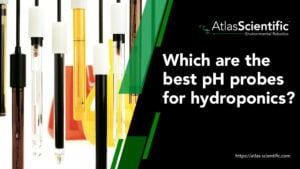

Best pH Probes For Hydroponics in 2025 – A Complete Buying Guide
Finding the best pH probe for hydroponics can make or break your growing success. In hydroponics, maintaining the correct pH is essential because it directly
# Type at least 1 character to search # Hit enter to search or ESC to close

No products in the cart.

No products in the cart.
Product Categories

CO2 scrubbers are used in both freshwater and saltwater aquariums that contain a protein skimmer to help control pH levels. So, if you have issues with elevated pH levels in your saltwater (or freshwater) aquarium, using a CO2 scrubber will help you maintain healthy levels.
Are you struggling to maintain a pH range in your aquarium? For people looking to maintain growth and metabolic health in aquariums, controlling pH levels using a CO2 scrubber is one of the most reliable and easiest ways to do so.
A CO2 scrubber can be installed on both saltwater and freshwater aquariums as long as you have a protein skimmer.
Even though there are many types of CO2 scrubbers, most of them function the same and all remove CO2 from the air. Air that is polluted with CO2 is pumped into the CO2 scrubber. The polluted air reaches an ion exchange resin, attracting any CO2 molecules that are present, isolating them from other gasses.

Aquariums can be difficult to maintain. Even if you maintain alkalinity levels correctly, carbon dioxide (CO2) in the air is likely the number one cause of pH levels declining in your aquarium water.
Depending on where you live, ambient CO2 can vary, sometimes resulting in excess CO2 in the surrounding air.
Excess CO2 in the surrounding air is transferred into the tank via natural gas exchange. This reaction creates carbonic acid which lowers the pH of the water. When pH is low in aquariums, it causes many issues such as calcification (bleaching) of corals and causing stress in fish, often resulting in death.
If you live in a colder climate, it is not practical to keep your windows and doors open, therefore a CO2 scrubber makes the perfect addition to your aquarium set-up.
CO2 scrubbers are designed to connect to the air intake of your protein skimmer or alternative piece of equipment you are using to introduce ambient air into your aquarium. When CO2 comes into contact with the media inside the scrubber, it absorbs and strips CO2 from the air, effectively raising the pH inside your aquarium.

Another issue many aquarium hobbyists face is algae outbreaks. If this rings a bell with you, we have good news! You can use a CO2 scrubber for your aquarium to reduce algae naturally. The scrubber will remove the CO2 that algae require to grow; without CO2, algae are unable to photosynthesize and spread in your aquarium.

In the aquarium trade, CO2 scrubbers are becoming more popular by the day, however, there are some ways the media is depleted, therefore there are a few things you should consider before using one for an aquarium.
The most common issue is the media drying out. When the media dries out, it is unable to neutralize CO2, so remember to always protect the media.
Aquarium hobbyists used to protect the media from drying out by adding one tablespoon of water at the bottom of the reactor. This was thought to keep the flow of air humid enough before it hit the CO2 media, which would prolong the media’s life.
However, when water was added to the reactor, it was quickly depleted resulting in the media drying out. This process works if you do not mind adding new water to the reactor every couple of days.
You must also take into consideration the skimmer intake (usually, liters per hour). The greater the skimmer intake, the higher amount of air is pulled through the CO2 media at a given time. The CO2 concentration that enters the CO2 scrubber has a massive effect on how long the scrubber can function.
If there is a lot of air movement near your aquarium, your tank will be exposed to higher levels of CO2. If your aquarium is exposed often to elevated CO2 levels, the pH of the tank water will be lower.
Not everyone will benefit from a CO2 scrubber. If elevated CO2 levels are not the issue in your home or office, then a CO2 scrubber will not help you reduce the pH level in your aquarium water. Perform an open window test and use a CO2 sensor to measure the amount of CO2 in the room.
A CO2 scrubber also may not work if you are running a very big aquarium with a poor protein skimmer.
Using a CO2 scrubber in your aquarium will help to raise and maintain a stable pH level which is needed to improve health and growth rates with your tank’s residents.
If you would like to learn more about CO2 sensors, or what other testing kits we have to offer, do not hesitate to contact our world-class team at Atlas Scientific.



Finding the best pH probe for hydroponics can make or break your growing success. In hydroponics, maintaining the correct pH is essential because it directly

The fastest way to reduce ammonia levels in a fish tank is to perform partial water changes, temporarily stop feeding fish, use chemical filtration, increase